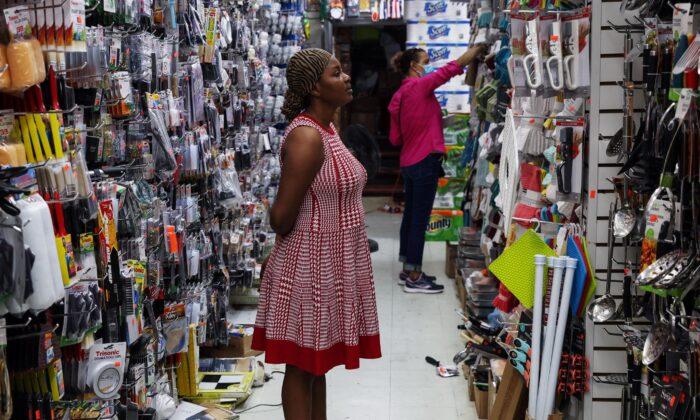Consumer Confidence Index
The Conference Board’s Consumer Confidence Index fell to 135.9 in July from a downwardly revised 137.4 in June, the lowest level since February 2019. The index averaged 132.7 in the first half of this year, which is down from 133.8 in the second quarter and 134.1 in the first quarter of 2021.The July survey saw the third month of decline in sentiment, following an even larger decline in June, which now stands at 95.7, and is 2.7 points below last month’s figure of 98.4.
About 43 percent of respondents said there is a greater than 50 percent chance that the U.S. economy will face a recession within a year, up from 13 percent in April.
“Consumer confidence fell for a third consecutive month in July,” said Lynn Franco, senior director of economic indicators at The Conference Board.
“The decrease was driven primarily by a decline in the Present Situation Index—a sign growth has slowed at the start of Q3. The Expectations Index held relatively steady, but remained well below a reading of 80, suggesting recession risks persist.”
Consumers Buying Less
Declining consumer spending has left retail businesses with excess inventory and is one of the key factors in the economic slowdown of the second quarter.Fewer consumers have been buying major household appliances and cars due to high costs.
The labor market differential, which asks whether jobs are easier or hard to find, fell to 37.8 in July after a 39.9 reading in June.
This is comparable to the latest unemployment data from the Labor Department, which still suggests a strong jobs market with at least 11.3 million job openings at the end of May, despite recent layoffs hinting at a cooling market.

The Expectations Index
The Expectations Index, which is focused on consumers’ short-term outlook for income, business, and labor market conditions, fell to 65.3 from 65.8 in June, as consumers showed less optimism in their assessment of the labor market.The manufacturing sector has been one of the strongest performers in the economy. The ISM Manufacturing Purchasing Managers Index jumped from 54.2 in June to 57.3 in July, its highest level since 2004 and well above expectations for a reading of 55.8. This suggests that manufacturing activity is continuing to expand amid strong global demand for U.S.-made goods.
A few economists still believe that the economy could still avoid a recession, as the job market remains strong and that average personal savings remain at steady levels.
Shortage of Housing
A housing market collapse, for now, does not appear likely, as a continuing shortage of available properties on the market is keeping prices elevated, but home sales are slowing down due to rising mortgage rates and higher prices.A separate report from the Commerce Department saw new home sales tumbling 8.1 percent to a seasonally adjusted annual rate of 590,000 units in June, the lowest level since April 2020.
The data comes just days after the National Association of Realtors(NAR) reported that sales of existing homes have fallen for the past four months, dropping to their lowest level in over two years. The decline in both new and existing home sales is a sign that consumers are feeling less confident about their financial situation and spending less money on big-ticket items like homes.
The S&P CoreLogic Case-Shiller on July 26, reported that its National Home Price Index increased 19.7 percent year-on-year in May after surging 20.6 percent in April.

Inflation Rates
Meanwhile, consumer concern regarding U.S. inflation rates over the next 12 months, has eased to 7.6 percent in July from 7.9 percent in June.“As the Fed raises interest rates to rein in inflation, purchasing intentions for cars, homes, and major appliances all pulled back further in July,” said Franco.
“Looking ahead, inflation and additional rate hikes are likely to continue posing strong headwinds for consumer spending and economic growth over the next six months.”
Attempts by the Federal Reserve to aggressively tighten monetary policy in order to tame inflation are leading to an economic slowdown.
The Fed has raised interest rates five times since December 2015 and is expected to continue doing so at least once a quarter until inflation stabilizes. Because higher interest rates increase the cost of borrowing money, they tend to slow economic growth by making it more expensive for consumers and businesses to spend on big-ticket items like cars and homes.
The central bank is expected to raise rates by another 75 basis points on July 27, bringing the total hike in the interest rate since the start of the year to 225 basis points.
The University of Michigan is scheduled to release its revised July reading on consumer sentiment on July 29.
The reading is expected to stick with the earlier preliminary estimate of 51.1, which was up from a record low of 50.0 in June.
The much-awaited release of the U.S. Bureau of Economic Analysis’ snapshot of third-quarter U.S. GDP is expected to be released on July 28.





